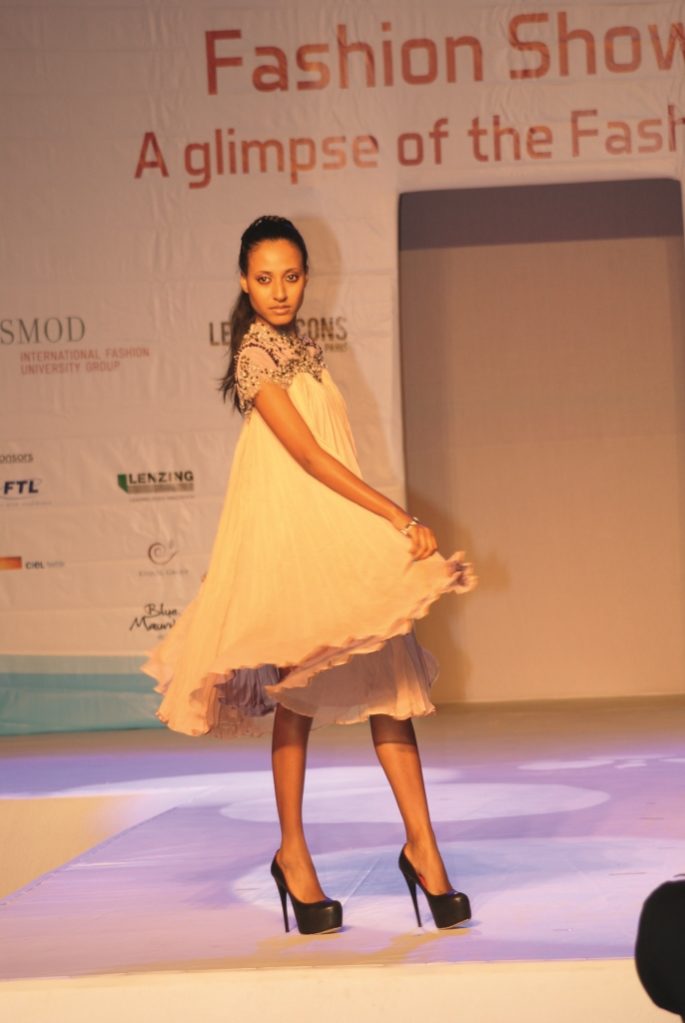Mauritius regards fashion as serious business. This was emphasized by the country’s industry, commerce and consumer protection minister, Cader Sayed-Hossen, when he declared that the items at the Trend Forum 2013 were made by Mauritius, not in Mauritius.
The country’s export promotion organization, Enterprise Mauritius, who hosted the event at the Intercontinental Hotel in October, aims to give its young designers cues on the trends shaping global fashion and more importantly, how to forecast those trends.

The country has aspirations to evolve from a rudimentary textile economy, synonymous with the likes of Bangladesh, and graduate into the sexy design environment that epitomizes the fashion worlds in New York, London and Tokyo.
The Indian Ocean island is along a trade route between Africa and Asia and has become a leading exporter of textiles and apparel to the world. Last year, the nation exported almost $1 billion to countries such as the Britain, France, the United States and South Africa.
Loading...
The fashion industry is a main pillar of Mauritius’ economy and since its genesis in the 1970s, has contributed to economic growth and attracted crucial foreign direct investment.
According to Enterprise Mauritius, the country now supplies to international brands such as Topshop, Levi’s, Zara, MANGO, Guess and Calvin Klein.
But sub-Saharan Africa’s most competitive country wants more and is beginning to punch above its weight, positioning itself as a major supplier of high-value fashion pieces.
This ambition is a familiar one. The t-shirt phase, where a significant number of poor farm workers who, rather than toil on land, accept harsh work conditions and low wages in textile and apparel factories, has been a rite of passage for nearly every rich country. Countries such as Britain, the United States, Japan and China have progressed from the t-shirt phase into broader economic development. Cambodia, Turkey, India, and Bangladesh are currently passing through this phase.
The t-shirt phase lasts only as long as there are large populations of farm workers with few options. But once the labor market has cleared, factories need to find a new competitive advantage which involves moving up the value chain and requires workers who are better skilled and better paid.
Mauritius is now at the juncture when the race to the bottom coincides with the beginning of a race to the top. What is refreshing is not only the ambitious vision, but the pragmatism that follows it. The country is certainly not a stuck-up upstart, but a keen apprentice that invited international players in the global fashion and design industry to speak and engage with students from local design institutions.
Representatives from WGSN, one of the world’s largest fashion trend forecasters with a glittering list of clients including Prada and Gucci, gave guidance on the social and cultural trends shaping design, as well as the translation of macro trends into color, textiles and product.

French representation came in the form of Louis Gerin and Gregory Lamaud, the creative director and director respectively, of Le Garcon. The pair gave insights on the evolution of European fashion trends.
Italy had KB Design’s director, Enrico Brussa, and creative director, Flora Russo, zoned in trends for autumn and winter as well as micro trends for jackets, cut and sewn, artworks, labeling and accessories.
Inspiration also came from South Africa, a country further up the value creation chain.
Bryan Ramkhilawon, CEO of the Cape Town Fashion Council, presented a case study on the South African market’s patterns.
The students were perhaps most inspired by the youngest speaker at the event, designer Shweta Wahi, who at 22, has shown in more fashion shows than her age (23 to be exact). Wahi, the creative director of the eponymous Shweta Wahi Creations brand, advised that African designers cannot compete with the prices of the East and the style of the West, and should instead find their own niche.
The fashion event was not only about fashion education, but action too. The last evening saw the launch of the Mauritius Fashion Design Council whose efforts to develop and look after the interests of local designers were bolstered by a generous donation from Shweta Wahi Creations. A significant part will go towards sponsoring the best fashion student in 2014.
The CEO of Enterprise Mauritius, Dev Chamroo, is committed to staging more events similar to this and promised that the next Trend Forum will be bigger, better and staged abroad.
The evening was aptly concluded by a breathtaking fashion show by the international designers present at the forum, providing final inspiration to the young designers whose items will don the Made By Mauritius With Care brand and, if Sayed-Hossen has anything to do with it, will be worn all around the world.
Loading...
